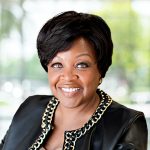
The DEIB acronym (diversity, equity, inclusion, and belonging) has come under scrutiny recently.
While the specific application of that term is drawing skepticism, the concept of cultivating an inclusive culture is still hyper-relevant and remains a priority for executives across all industries and in every position in the C-suite.
This is especially true when you’re operating with a multigenerational workforce. The current workforce contains members from not one or two but five different generations.
With a group like this, the range of perspectives and experiences is enormous. This makes it important to consider your strategy carefully when it comes to building an equitable work environment where everyone feels safe, included, and encouraged to invest their efforts.
At Stanton Chase, we’ve been watching the shift away from the specifics of DEIB and the new inclusivity initiatives that are arising in its wake, particularly as they pertain to generational differences. Here are a few thoughts and suggestions we’ve found along the way that can help you successfully bring your own multigenerational teams together.
Take the Time to Understand Each Generation
As a leader, it’s important to understand who you’re leading. In the workplace, this can mean many different things. An individual’s gender, background, experience, culture, and interests can all define part of who they are. Another major factor is age.
It’s important not to use generic categories to assume things about a person or cubbyhole them into an undeserved stereotype. With that said, the most common way to assess age-related proclivities is by dividing them up into generations, of which there are currently five actively contributing to the workforce.
This includes the remaining members of The Silent Generation, a strong contingent of Baby Boomers, most Gen Xers and Millennials, and a growing number of new Gen Zers. Let’s take a closer look at each one:
- The Silent Generation and Baby Boomers grew up in a time of societal change. The Civil Rights Movement that they lived through established a deep sense of diversity as a moral imperative. However, this group also tends to see the modern politicization and radicalization of diversity as an affront to traditional values and something they should resist.
- Gen X is the “middle child” of the Five Generations. They are a pragmatic crew that lives somewhere between the conservative idealism of Boomers and the progressive skepticism of younger generations.
- Millennials and Gen Zers grew up in a world steeped in diversity and inclusion. This started with their education and has continued to be a mantra at work. This has created a sense that inclusivity is urgent, ethical, and essential. To them, social justice is a priority that executives should never ignore.
By investing in understanding what it is that makes each group “tick,” a leader can make it easier to communicate with each generation. They can also use this information to tailor how they word specific initiatives, goals, and activities to ensure they resonate with each group.

Don’t Get in a DEIB “Rut”
Yes, diversity is still relevant, but the way it manifests in the workplace is evolving fast. For example, some corporations are responding to the current discourse on the subject by changing the titles of their Chief Diversity Officers.
These adjustments must be more than reactions to the current whims of corporate social pressure. While a title change is fine, leaders must accompany it with a cultural shift toward inclusion. This should come from a proactive and positive desire to create a fair and equitable work environment rather than simply responding to rules, laws, and mandates.
This shift can start by establishing a clear desire to focus on a workplace culture that values inclusivity and belonging. While we’ve touched on both of these concepts multiple times already, let’s take a moment to consider what each one specifically means.
Inclusion focuses on facilitating an efficient and positive workplace environment. It emphasizes respect and support regardless of personal backgrounds, preferences, or characteristics.
Belonging sounds similar to inclusion. However, it is distinctly different in the fact that it focuses on personal feelings of acceptance and value within a workplace community. It emphasizes fostering engagement and ongoing development rather than immediate productivity or efficiency.
Together, inclusivity and belonging become a powerful engine for both short and long-term productive harmony in the workplace. They also avoid falling into a DEIB “rut” of dated terminology and empty lip service.
Stay Plugged In and Keep Feeding the Conversation
Leaders must always be willing to lead the way—especially when it comes to concepts like inclusivity and diversity. It’s up to them to keep ongoing conversations alive and well. They must commit to actively listening to employee experiences from all ages and backgrounds. They must also work to reciprocate by communicating with these individuals on their terms and from their perspectives.
In addition, C-suite leaders must regularly assess the policies, practices, and procedures surrounding diversity, equity, inclusivity, and belonging. While motivations should extend beyond following the rules, leaders should also take the time to update and adjust these policies to reflect the current expectations, regulations, and so on.
This shouldn’t stop with words, either. Actions must align with statements. Executives should lead the charge in implementing comprehensive inclusivity training. CHROs should institute equitable hiring practices, as well, and learn to both hire external and promote internal candidates who can champion inclusive cultures within their own teams and circumstances.

Effectively Championing Inclusivity for a Multigenerational Workforce
Real change always requires significant effort. Leaders must acknowledge that equitable concepts like inclusive culture initiatives aren’t buzzwords. Inclusivity and belonging are fundamental elements that should guide their decisions, expectations, companies, and cultures.
Inclusivity and belonging are fundamental principles that should guide [leaders’] decisions, expectations, companies, and cultures.
The specifics of traditional DEIB may be under scrutiny, but the larger concepts the term represents remain important and applicable. We must not throw out the baby with the bathwater. Instead, we must find correct ways to build inclusive workspaces that value every generation within them.
This is why Stanton Chase doesn’t just help with recruitment. We seek to create leadership teams built on mentoring, coaching, career development, and even succession planning. This full-circle executive life cycle allows companies to maintain inclusivity and belonging standards that remain a key element in overseeing a harmonious workforce and bring the best out of every generation.
About the Authors
Peter Deragon is a Managing Director at Stanton Chase Los Angeles, the Supply Chain Global Functional Leader, and the Capital Markets and Investment Banking Global Subsector Leader. He is also active in the CFO Practice Group and Financial Services, where he started his career. He has 30-plus years of experience as a trusted advisor and manager in B2B environments. In his free time, Peter supports charitable organizations, especially those focused on ocean stewardship.
Dr. Anita Polite-Wilson is an Advisor for Stanton Chase Los Angeles. She is also the Founder and CEO of Dr. Anita Enterprises, Inc. She specializes in reframing diversity conversations from difficult to different. She helps leaders and teams navigate complexity and change associated with diversity endeavors.
How Can We Help?
At Stanton Chase, we're more than just an executive search and leadership consulting firm. We're your partner in leadership.
Our approach is different. We believe in customized and personal executive search, executive assessment, board services, succession planning, and leadership onboarding support.
We believe in your potential to achieve greatness and we'll do everything we can to help you get there.
View All Services
